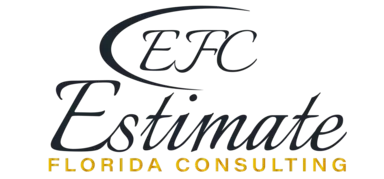Multi-Family Building Security System Cost Estimator
Ensuring the safety and security of residents is a top priority for multi-family building owners and managers. A comprehensive security system plays a vital role in protecting both the property and its occupants from potential threats. The cost of installing a security system in a multi-family building can vary widely depending on several factors, such as the type of system, building size, and specific security needs. As Estimate Florida Consulting Services, we provide estimator services to help property managers and developers accurately budget for their security system installations. This guide explores the factors influencing security system costs and offers insights to aid in planning and decision-making.
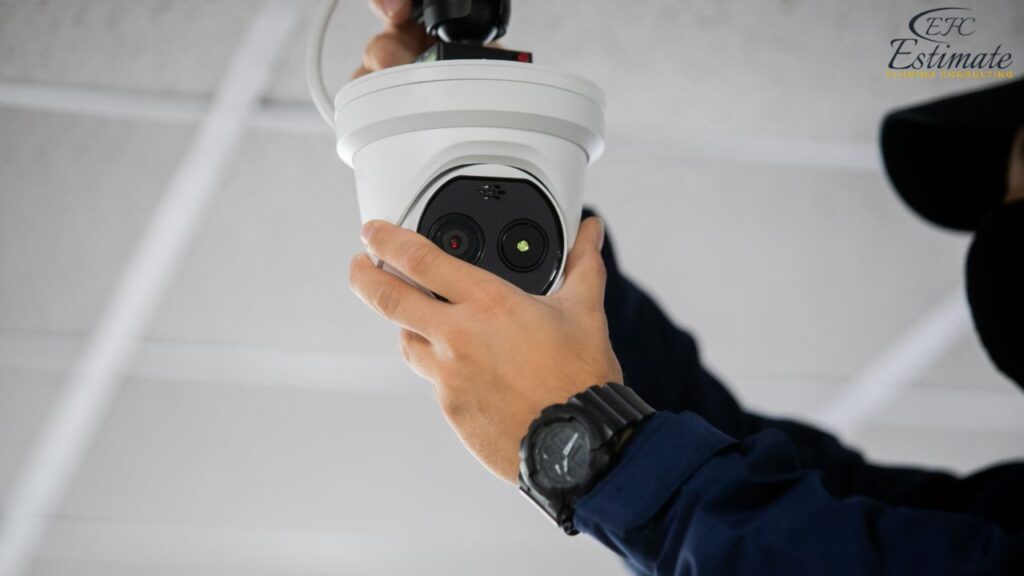
Cost Breakdown of Common Security System Components
Understanding the cost breakdown of various security system components can help property managers plan their budgets more effectively. Here are some common components and their estimated costs:
Component | Estimated Cost Range |
Surveillance Cameras | $2,600 – $5,200 per unit |
Access Control Systems | $1,300 – $2,600 per door |
Intrusion Detection | $650 – $1,300 per sensor |
Intercom Systems | $1,300 – $3,900 per unit |
Fire Safety Systems | $7,800 – $15,600 per building |
Each component plays a vital role in the overall security strategy and must be chosen with care to ensure comprehensive coverage. The choice of components should align with the specific security needs identified during the assessment phase and should be capable of integrating seamlessly with existing systems to provide a unified security solution.
Factors Influencing Security System Costs
Several factors influence the cost of installing a security system in a multi-family building. Understanding these factors is essential for accurate budgeting and successful project execution:
Building Size and Layout:
The size and layout of the building significantly impact security system costs. Larger buildings require more equipment and coverage, increasing overall costs. Complex layouts with multiple entry points and shared spaces may necessitate additional security measures to ensure comprehensive coverage. Detailed planning and consultation with security professionals can help optimize the placement and number of security devices needed. Additionally, buildings with unique architectural features may require custom solutions to address specific security challenges.
Building Size | Estimated Security System Cost |
Small (up to 4 stories) | $22,100 – $33,200 |
Medium (5 to 10 stories) | $28,600 – $47,900 |
Large (10+ stories) | $36,400 – $63,200 |
Type of Security System:
The type of security system selected influences the overall cost. Basic systems with standard features may be more affordable, while advanced systems with cutting-edge technology and integration capabilities may require a larger investment. Selecting the right system involves balancing cost with security needs and technological requirements. Evaluating the specific security threats and needs of the building can guide the choice of system features and capabilities. Understanding the latest technological advancements can also help property managers make informed decisions about which features offer the best value and effectiveness.
Security System Type | Estimated Cost Range |
Basic System | $11,700 – $19,500 |
Advanced System | $19,500 – $32,500 |
Integrated Smart System | $26,000 – $42,900 |
Installation and Labor Costs:
Installation and labor costs vary based on the complexity of the security system and the building’s infrastructure. Professional installation ensures the system is set up correctly and operates efficiently. Hiring experienced installers can help prevent technical issues and ensure seamless integration with existing systems. Detailed installation plans and coordination with other building services can enhance efficiency and reduce installation time. Moreover, investing in a professional installation can minimize the risk of system malfunctions and ensure compliance with local building codes and standards.
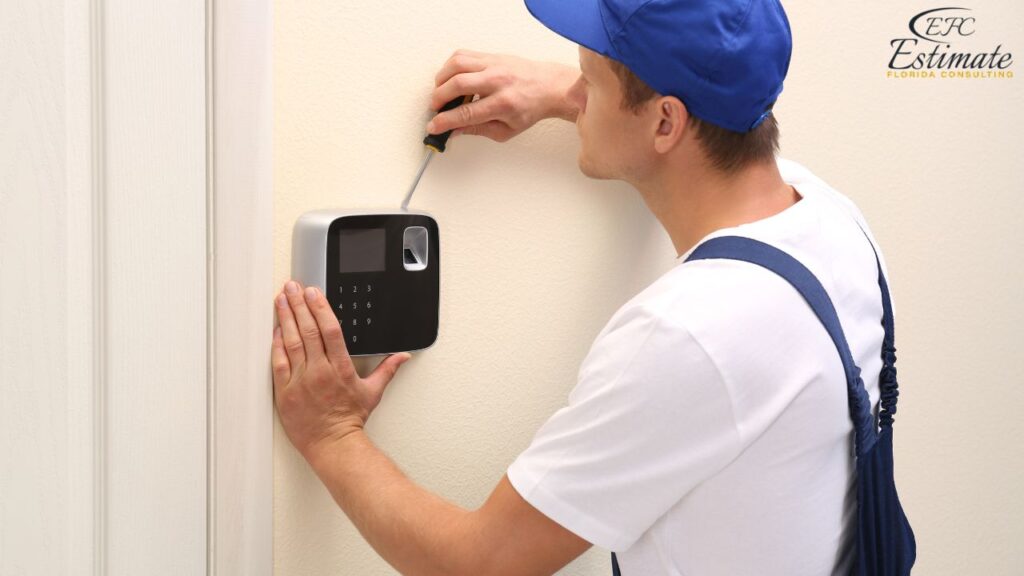
Installation Component | Estimated Cost Range |
Professional Installation | $6,500 – $13,000 |
System Integration | $3,900 – $7,800 |
Maintenance and Monitoring Costs:
Ongoing maintenance and monitoring are essential for keeping the security system operational and up-to-date. Maintenance contracts and monitoring services help detect issues early and ensure the system remains effective over time. Investing in reliable monitoring services can enhance security and provide peace of mind for residents and property managers. Regular maintenance schedules and prompt repairs are crucial for the long-term functionality of the security system. Proactive maintenance strategies can prevent costly repairs and extend the lifespan of the system components.
Cost Component | Estimated Annual Cost Range |
Maintenance Contracts | $2,600 – $5,200 |
Monitoring Services | $3,900 – $7,800 |
Key Components of Multi-Family Building Security Systems
A multi-family building security system typically includes several key components, each contributing to the overall safety and functionality of the system. Understanding these components is essential for designing a system that meets the building’s specific needs:
Surveillance Cameras:
Surveillance cameras are a critical component of any security system, providing real-time monitoring and recording of building activities. High-definition cameras with night vision capabilities ensure comprehensive coverage, both day and night. Cameras can be strategically placed in common areas, entrances, exits, parking lots, and other vulnerable spots to deter criminal activity and provide evidence in the event of an incident. Additionally, modern cameras offer features such as motion detection, facial recognition, and remote viewing, allowing security personnel to monitor the premises from anywhere.
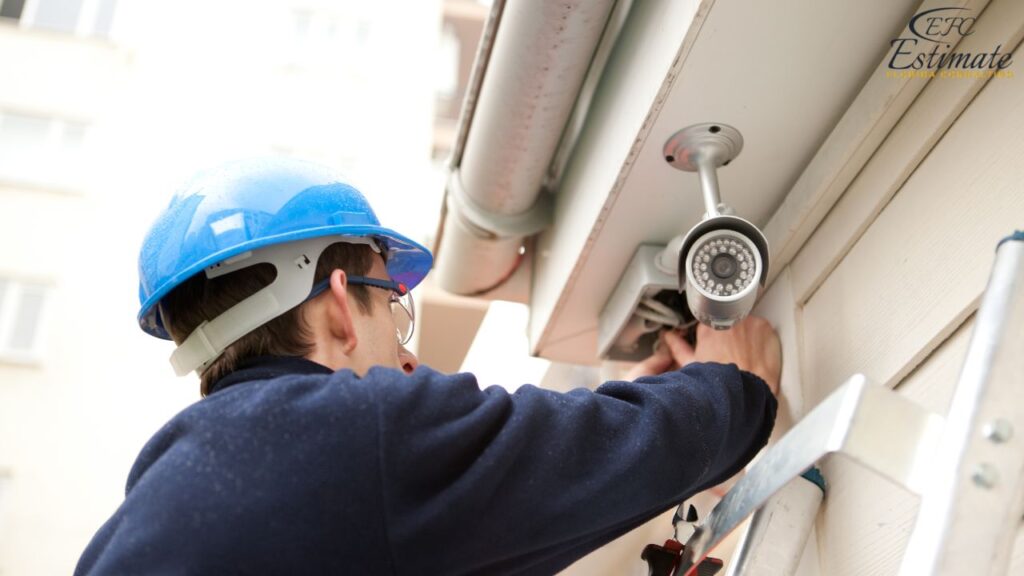
Access Control Systems:
Access control systems regulate entry to the building, ensuring that only authorized individuals can access certain areas. Keycard or key fob systems are commonly used to manage access to common areas and individual units. Advanced access control systems can integrate with mobile apps, allowing residents to unlock doors remotely and receive alerts about suspicious activity. These systems not only enhance security but also offer convenience to residents by allowing seamless access without the need for traditional keys, which can be easily lost or duplicated.
Intrusion Detection Systems:
Intrusion detection systems are designed to alert property managers and security personnel to unauthorized access or breaches. These systems typically include motion detectors, door/window sensors, and glass break sensors. When triggered, they can sound alarms and send notifications to designated personnel or security companies. By providing immediate alerts, intrusion detection systems help prevent potential break-ins and can significantly reduce response times during security incidents. Integration with other security components can offer a cohesive and efficient security strategy.
Intercom Systems:
Intercom systems facilitate communication between residents and building staff or security personnel. Video intercoms provide an added layer of security by allowing residents to visually verify visitors before granting access. Intercom systems can also be integrated with access control systems for enhanced convenience and security. This integration allows residents to control access from their smartphones, improving the overall living experience and simplifying visitor management.
Fire and Life Safety Systems:
While primarily focused on safety, fire and life safety systems are an integral part of a building’s security infrastructure. These systems include smoke detectors, fire alarms, sprinkler systems, and emergency lighting. Ensuring these systems are up-to-date and properly maintained is crucial for protecting residents in the event of an emergency. Regular drills and system tests can enhance readiness and ensure that all safety measures function correctly during critical situations.
Fill Out & Get A Contractor
Designing a Security System Tailored to Multi-Family Buildings
Designing a security system that meets the unique needs of a multi-family building requires careful planning and consideration. Here are some key steps to ensure your security system is effective and efficient:
Conduct a Security Assessment:
Conduct a thorough security assessment to identify potential vulnerabilities and determine the specific security needs of the building. Evaluate the building’s layout, entry points, and common areas to identify where security measures are most needed. Collaborating with security experts can provide valuable insights and recommendations for optimizing the security system. A comprehensive assessment includes considering local crime rates, resident concerns, and potential internal security issues. This process helps to prioritize resources and focus on the most critical areas that require protection.
Customize the Security Solution:
Customize the security solution to fit the building’s unique requirements and budget constraints. Work with security professionals to select the right combination of surveillance cameras, access control systems, intrusion detection, and other components. Tailoring the system to the building’s specific needs ensures comprehensive coverage and enhances overall security. Customized solutions can address unique building features and specific tenant needs, providing a tailored security approach. This level of customization not only improves effectiveness but also optimizes costs by eliminating unnecessary features.
Integrate with Smart Technology:
Consider integrating the security system with smart technology for enhanced convenience and control. Smart systems allow property managers and residents to monitor and manage security features remotely using mobile devices. This integration can provide real-time alerts, remote access control, and automation, enhancing the overall effectiveness of the security system. Smart technology can also include features such as facial recognition, automated access logs, and integration with other building management systems. These features improve security by allowing quick responses to incidents and enabling data-driven decision-making for future improvements.
Plan for Future Upgrades:
Design the security system with future upgrades in mind to accommodate technological advancements and changing security needs. Planning for future upgrades during the initial installation phase can minimize disruption and cost if enhancements are needed later. This approach ensures the security system remains adaptable and responsive to evolving threats and resident expectations. Future-proofing the system includes considering scalable solutions and flexible infrastructure that can easily incorporate new technologies. Regular reviews and updates to the system can keep it aligned with the latest security trends and best practices.
Additional Security Enhancements for Multi-Family Buildings
In addition to the core components, several additional features can enhance the security of a multi-family building:
Perimeter Security:
Installing perimeter security measures such as fences, gates, and motion-sensor lighting can deter unauthorized access and enhance overall security. These measures provide an additional layer of protection and can be integrated with surveillance cameras and access control systems for comprehensive coverage. Perimeter security can include advanced features like infrared beams and automated barriers for heightened protection. These enhancements are particularly useful in buildings located in high-crime areas or with expansive grounds that require additional vigilance.
Enhancement | Estimated Cost Range |
Perimeter Fencing | $13 – $26 per linear foot |
Motion-Sensor Lighting | $130 – $260 per unit |
Emergency Communication Systems:
Emergency communication systems enable residents to quickly contact security personnel or emergency services in case of an incident. These systems can include emergency call boxes, panic buttons, and mass notification systems that broadcast alerts throughout the building. Effective emergency communication systems ensure swift responses to emergencies, reducing potential harm and property damage. These systems are crucial for maintaining communication during emergencies and ensuring that all residents receive timely information and instructions.
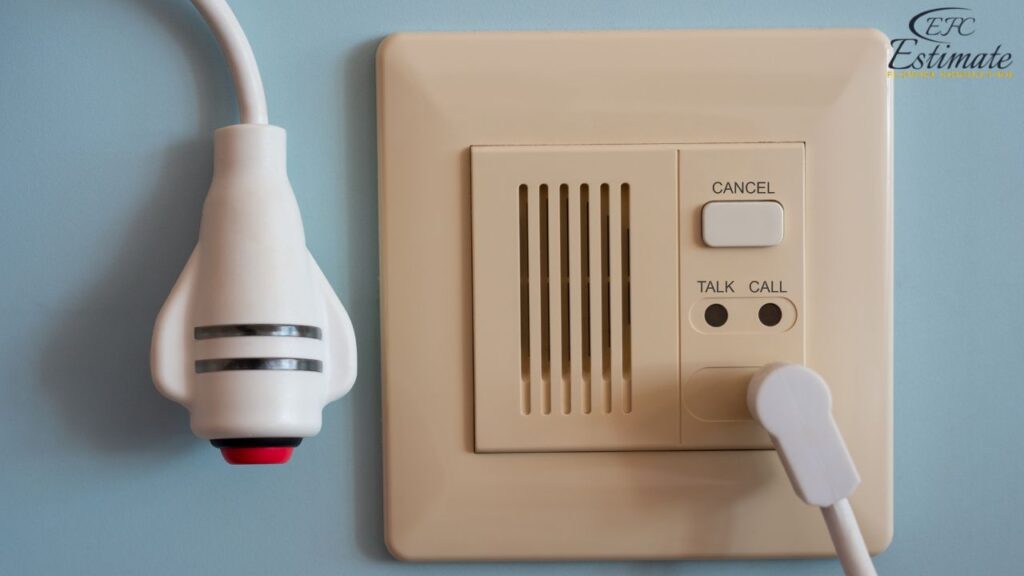
Enhancement | Estimated Cost Range |
Emergency Call Boxes | $1,300 – $2,600 per unit |
Panic Buttons | $130 – $390 per unit |
Visitor Management Systems:
Visitor management systems track and manage visitors entering the building, enhancing security and accountability. These systems can include visitor check-in kiosks, digital visitor logs, and temporary access badges. By monitoring visitor activity, these systems help prevent unauthorized access and ensure that all visitors are accounted for. This enhances the security of the building and provides a record of all individuals who enter the premises.
Enhancement | Estimated Cost Range |
Visitor Check-In Kiosks | $2,600 – $5,200 per unit |
Digital Visitor Logs | $130 – $260 per month |
Integrating Security with Building Management Systems
Building Automation Integration:
Integrating security systems with building automation can streamline operations and improve energy efficiency. This integration allows for coordinated control of lighting, HVAC, and security systems, optimizing building performance and reducing operational costs. Automated responses to security breaches, such as locking down specific areas or adjusting lighting levels, can enhance safety and reduce the risk of incidents.
Data Analytics and Reporting:
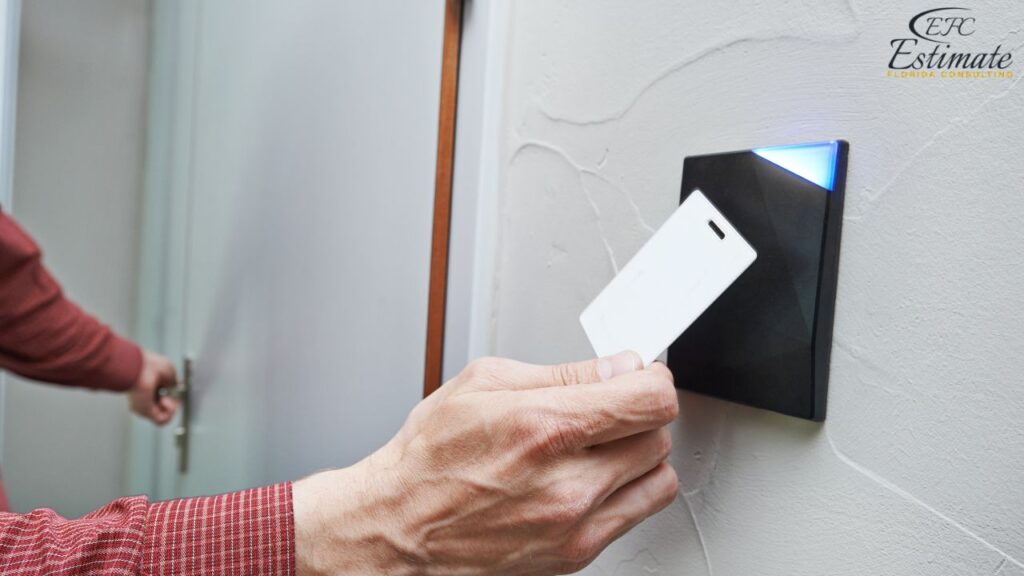
Utilizing data analytics and reporting tools can provide valuable insights into security trends and system performance. These tools can help property managers identify patterns, assess risks, and make informed decisions about security enhancements. Regular data analysis can also help optimize resource allocation and improve overall security strategy effectiveness.
Long-Term Benefits of Investing in Security Systems
Investing in a high-quality security system offers several long-term benefits for multi-family buildings, including:
Enhanced Tenant Satisfaction and Retention:
A robust security system enhances resident safety and peace of mind, contributing to higher tenant satisfaction and retention rates. Tenants are more likely to renew their leases and recommend the building to others when they feel secure in their environment. By prioritizing security, property managers can create a positive living experience that attracts and retains quality tenants. High tenant satisfaction not only boosts occupancy rates but also fosters a sense of community and trust among residents.
Increased Property Value and Marketability:
A state-of-the-art security system can increase the property’s value and marketability, attracting potential buyers and tenants who prioritize safety. A well-designed security system demonstrates a commitment to resident welfare and building integrity, enhancing the building’s appeal in a competitive real estate market. Properties with advanced security measures are often more appealing to prospective tenants and buyers, as they offer peace of mind and reduce liability risks.
Reduced Liability and Insurance Costs:
A comprehensive security system can help reduce liability and insurance costs by minimizing the risk of theft, vandalism, and other security incidents. Many insurance providers offer discounts for properties with robust security measures, leading to cost savings for property managers. By investing in security, property managers can protect their assets and mitigate potential financial risks. This investment not only pays off in terms of reduced incidents but also in lower premiums and increased confidence in the property’s safety.
Download Template For Security System Project Breakdown
- Materials list updated to the zip code
- Fast delivery
- Data base of general contractors and sub-contractors
- Local estimators
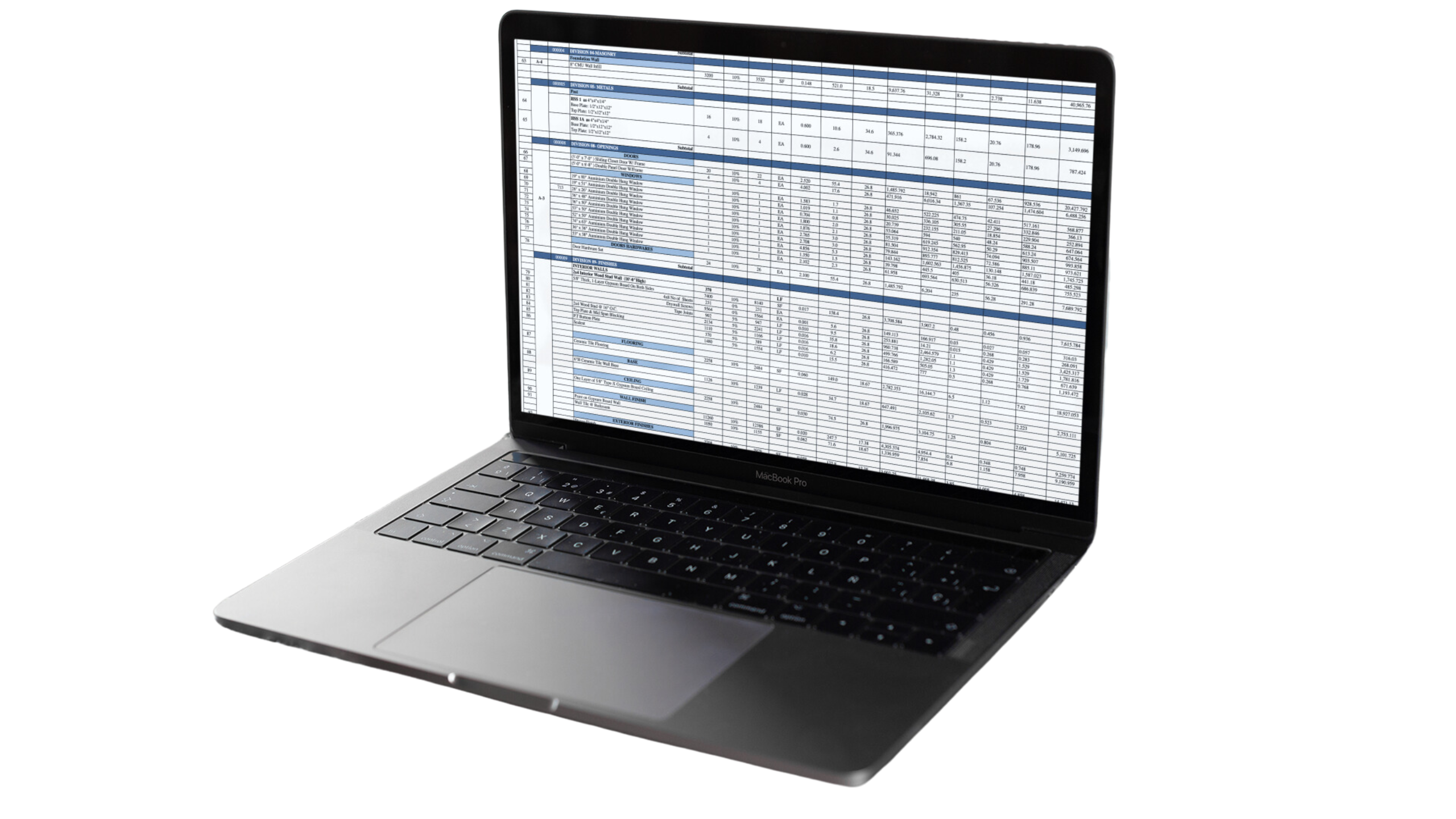
Conclusion
Installing a security system in a multi-family building is a critical investment that enhances resident safety and property value. By understanding the factors that influence costs and considering both immediate and long-term benefits, property managers and developers can make informed decisions and achieve a high-quality, reliable security solution. As Estimate Florida Consulting Services, we are committed to providing comprehensive estimator services to help you navigate the complexities of security system installation and ensure the best results for your investment. By prioritizing safety, technology, and adaptability, property managers can create a secure and welcoming environment that supports tenant satisfaction and long-term success. Through strategic planning and collaboration with security experts, developers can ensure their multi-family building projects are equipped with cutting-edge security solutions that meet all safety and performance standards. This proactive approach not only safeguards the building’s integrity but also enhances its reputation and competitiveness in the real estate market, providing lasting value and peace of mind for all stakeholders involved.
FAQs
The cost of installing a security system is influenced by several factors, including the building size and layout, type of security system, installation and labor costs, and ongoing maintenance and monitoring expenses. Larger buildings with complex layouts require more equipment and coverage, increasing overall costs. The choice of security system (basic, advanced, or integrated smart system) also affects the budget.
- Here are the estimated costs for common security system components:
- Surveillance Cameras: $2,600 – $5,200 per unit
- Access Control Systems: $1,300 – $2,600 per door
- Intrusion Detection: $650 – $1,300 per sensor
- Intercom Systems: $1,300 – $3,900 per unit
- Fire Safety Systems: $7,800 – $15,600 per building
- The estimated costs for professional installation and system integration are:
- Professional Installation: $6,500 – $13,000
- System Integration: $3,900 – $7,800
Long-term benefits include enhanced tenant satisfaction and retention, increased property value and marketability, and reduced liability and insurance costs. A robust security system provides peace of mind for residents, attracts potential tenants and buyers, and can lead to insurance discounts.
- The size of the building significantly impacts security system costs. For example:
- Small (up to 4 stories): $22,100 – $33,200
- Medium (5 to 10 stories): $28,600 – $47,900
- Large (10+ stories): $36,400 – $63,200
- Larger buildings require more equipment and coverage, leading to higher overall costs.
- Additional enhancements include:
- Perimeter Security: Fencing ($13 – $26 per linear foot) and Motion-Sensor Lighting ($130 – $260 per unit)
- Emergency Communication Systems: Emergency Call Boxes ($1,300 – $2,600 per unit) and Panic Buttons ($130 – $390 per unit)
- Visitor Management Systems: Visitor Check-In Kiosks ($2,600 – $5,200 per unit) and Digital Visitor Logs ($130 – $260 per month)
- These enhancements provide additional layers of security and improve overall safety and accountability.
Google Reviews

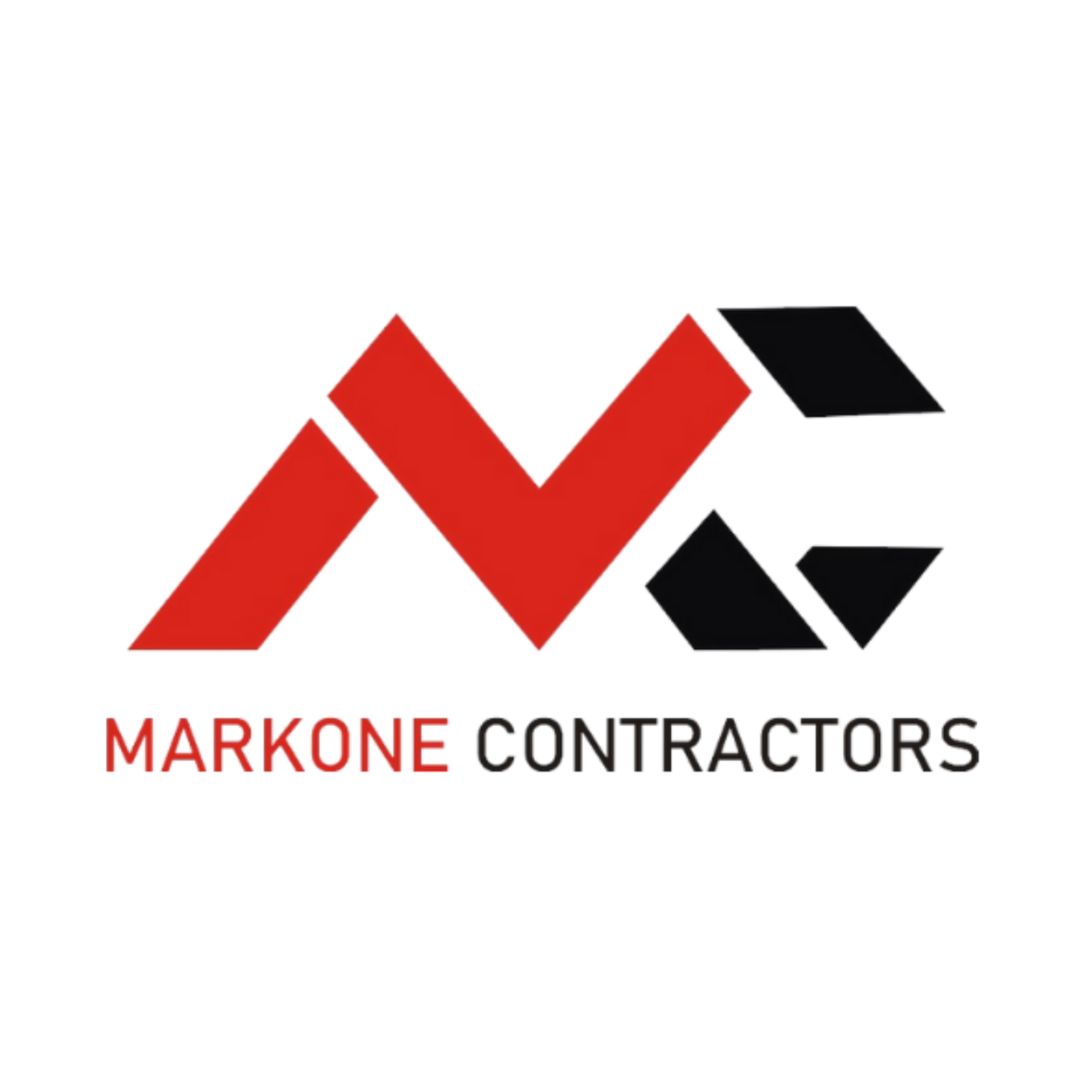

Process To Get Security System Cost Estimate Report
Here I am going to share some steps to get security system cost estimate report.
-
You need to send your plan to us.
You can send us your plan on info@estimatorflorida.com
-
You receive a quote for your project.
Before starting your project, we send you a quote for your service. That quote will have detailed information about your project. Here you will get information about the size, difficulty, complexity and bid date when determining pricing.
-
Get Estimate Report
Our team will takeoff and estimate your project. When we deliver you’ll receive a PDF and an Excel file of your estimate. We can also offer construction lead generation services for the jobs you’d like to pursue further.

